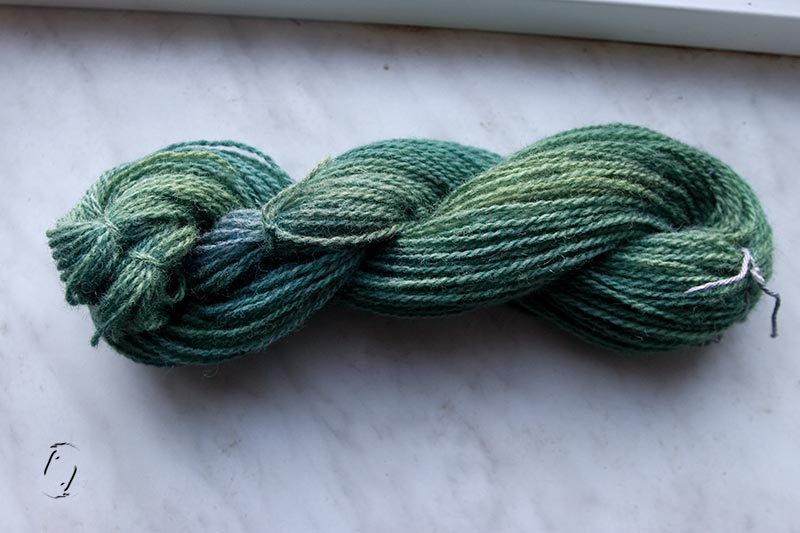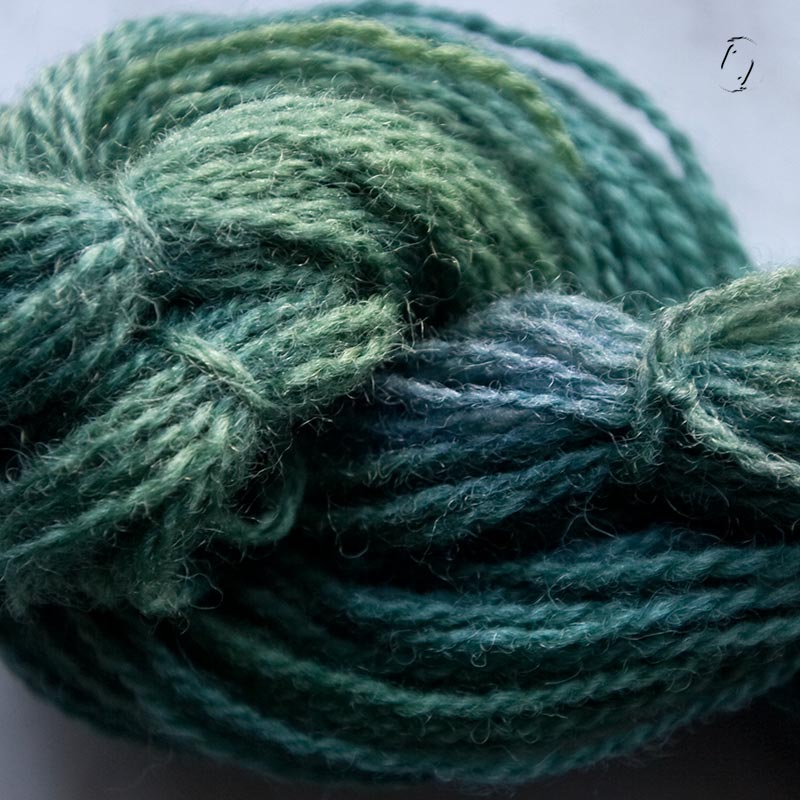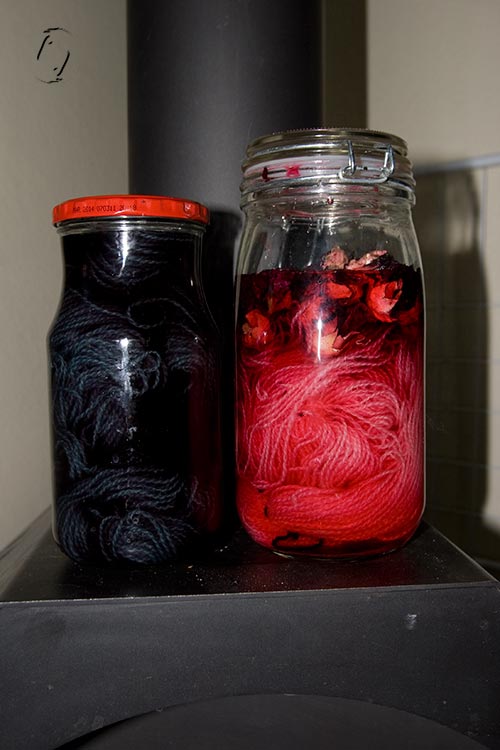My experiments with Hollyhock flowers continue. This time a “solar” dye technique, using variations of indoor temperatures to mimick summer.
Rainwater, vinegar, pH 4. 35 g yarn, 10 g dry flowers. Left on top of fireplace 2 days. I shook it up once in a while when taking photos of the progress. Shelf temp. 60-65 C when fired up, 40-45 C on the top of stove (where I let it remain), 15 C in the morning.
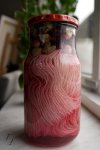
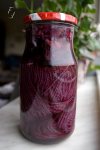
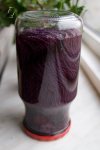
30 minutes – 3 hours – 24 hours

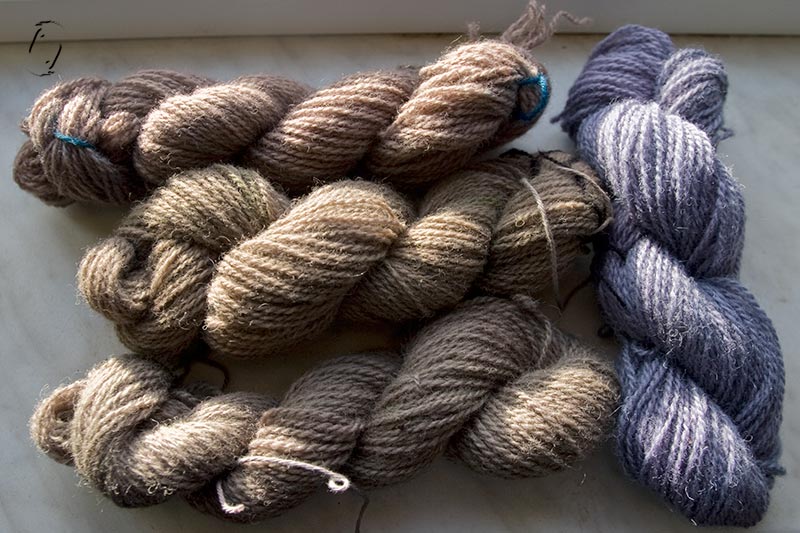
Same procedure, pH 6-7 (my strips are not super accurate) yielded pretty much the same shade, so I took the remains of the dyebath, put in ammonia until it was way up (11+, it takes only drops….), then dunked it for a minute. Thought I might as well compare it to the “boiled green”. There are some strands that had not as much dip as the rest, they turned blue. I left them as such, for science. 😉
Next, both exhausts mixed and upped to pH 8, 2 days on stove. As you change the pH the dyebath pretty much changes to the colour you’ll get on the yarn, how’s that for an indicator? I had fun adding ammonia to get green, then vinegar water to make it rosy again with the last bit of dyebath before I poured it out.
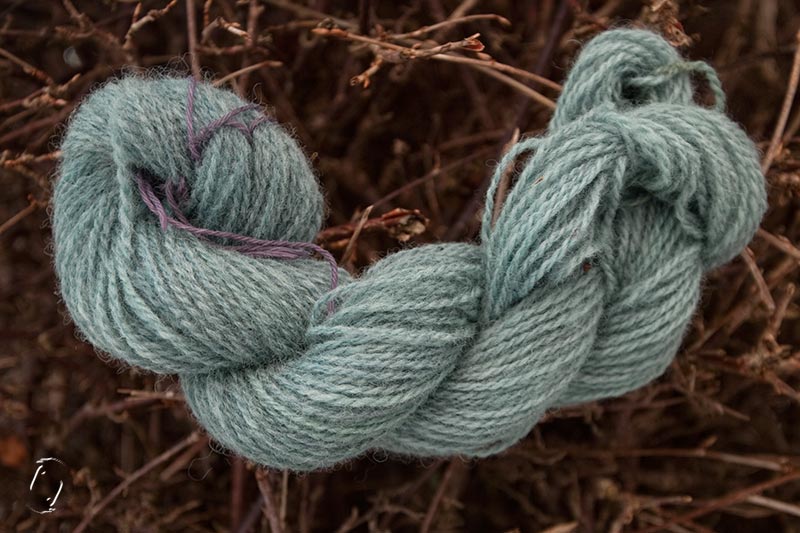
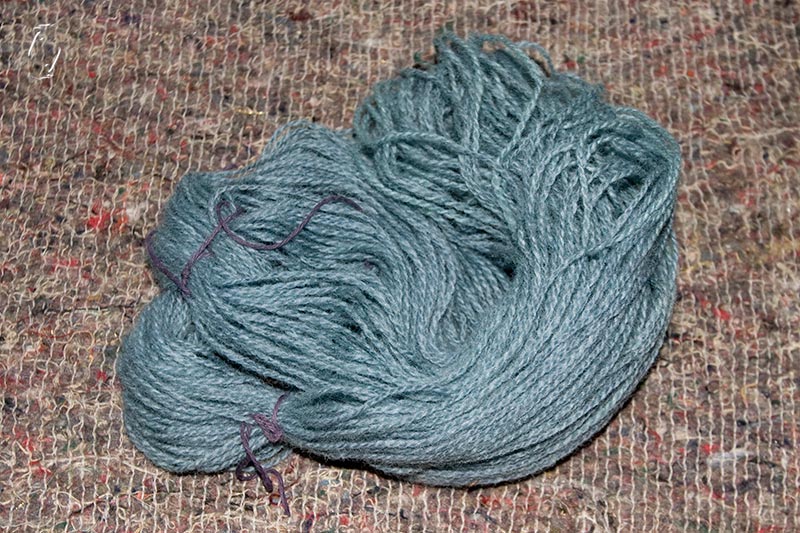
As you can see however, once I took it out I didn’t quite get the steel blue (left jar below) or the baby blue of the strands on the previous skein, may have left it in there too long and it got too alkaline. A safer bet if you want sky blue may be to do a neutral 6-7 pH lavender then a dip in pH 8. Maybe it takes even less to turn it.
I think I’m going to have to try and get some dark red flowers and see if they give a more rosy warm shade. I thought the acid one would be, given the heather rosy tint I got on the first project with a vinegar afterdip – maybe afterdips are different, maybe if was the temperature? As you can see the dyebath starts out very pink, then to turn purple over time. Could be a completely cold dye procedure would be different yet again. Or maybe I need to push the acid lower than 4 if we have green on the opposite end, then blue, purple in the middle and ?
Join us next week in the quest for pink, 2 more jars in this series still cooking… I’m thinking that perhaps the lavender skein was closer to neutral pH, since it was identical to the neutral one, so I’ll have to conduct another test with the exhaust from the red jar below. Meaning, I need to mordant more yarn to get reliable comparisons, meaning y’all need to wait for a bit.
In the meantime, I’ve also mordanted the rest of my Dorset fleeces in tin/alum/CoT, about 650 g. So look out for “Hollyhock 3”. Or possibly 4.
Stokroser 2
Nye eksperimenter, denne gang farvet ved stuetemperatur, dvs. jeg forsøgte at kopiere solfarvning ved at stille glassene på brændeovnen, det giver 40-45 grader om dagen og ca. 15 om natten. 2 døgn hver ved pH 3, 6 og 8. Den mellemste lignede grangiveligt den første, så den fik et meget basisk dyp til sidst og blev en flot grøn. Spørgsmålet er, om jeg har fejlmålt pH værdien på det første fed, og det måske var nærmere neutral, dette er jeg i gang med at teste….
Jeg har brugt regnvand, men nu hvor vi har fået frost er jeg nok nødt til at bruge vandhanen, selvom det evt. godt kan give et mere gråligt resultat at dømme fra første test.
Næste test er dels tinbejset, dels helt “koldt” bad uden ovn og, når jeg får dyrket nogen, mørkerøde blomster i stedet for sort-violette. Noget tyder dog på at det er pH værdien som er afgørende, så jeg er i gang med næste test i ren eddike.

